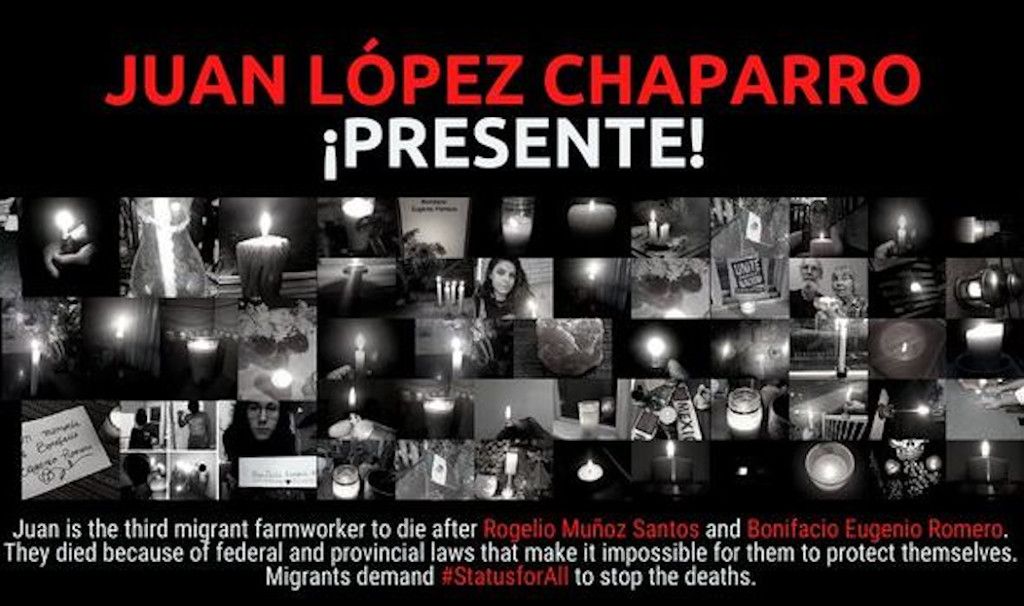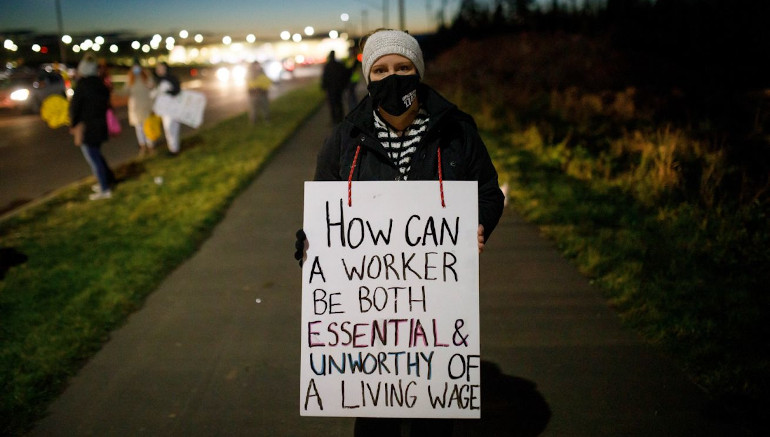Karl Marx once said, “The oppressed are allowed once every few years to decide which particular representatives of the oppressing class are to represent and repress them.” While this may be a critique of liberal democracy, it can also apply to the state of temporary foreign workers in Canada who hope to live under better conditions when they enter the country, but only end up replacing their oppression class back home to the oppression in Canada.
Regardless of immigration status, migrants to Canada constitute a large number of essential workers in the agriculture, food processing, retail and care work industries. The importance of these workers in Canada is such that during the early days of the pandemic, the country closed its border to non-essential migration but made exemptions for those who would work in essential industries, such as farm workers.
Farm work is hard, long, dirty, dangerous and poorly paid. Between 1990 and 2005, 1,769 people were killed in “agricultural injury events” in Canada – more than 100 a year. That is why so many farm workers are recent migrants or temporary workers.
Currently, farms in Canada rely on approximately 60,000 temporary workers to harvest crops, most of whom come from Latin America and the Caribbean. At the time of writing, there have been three COVID-related deaths and approximately 1,000 infections to date in Canada, all of which involve workers from Mexico. These outbreaks stretch across 21 farms in the country, with things getting so bad that Mexico decided to stop sending any workers to Canada in mid-June 2020, before resuming the program a week later.
Temporary Farm Workers usually enter Canada through the federal Seasonal Agricultural Program. Employers are allowed to hire these workers for a maximum period of 8 months, between January 1 and December 15, as long as they are able to offer the workers a minimum of 240 hours of work within a period of 6 weeks or less. Others come to work through private schemes arranged between the farmer and private agencies. Once the workers enter the country, they are exposed to inhumane living conditions. In May 2020, images surfaced on Facebook showing several mattresses placed on pallets in a warehouse to serve as beds.In some cases, farmers have even installed padlocks on the outside of a bunk house’s only exit, effectively trapping workers inside with no chance of getting out in case of an emergency such as a fire. Furthermore, there is a lack of personal protective equipment and hand sanitizers, with common living for people who have tested positive and others who have not.
The plight of foreign farm workers in Canada is not new since there have been complaints of crowded housing, the threat of deportation, harassment and lack of sick pay in the past too. In 2018, a farm worker called Teresa (not her real name) was sexually assaulted by her employer. Her case highlighted how even Mexico’s own Secretariat of Labour and Social Welfare warns temporary farm workers about complaining or causing problems in Canada resulting in terminating their employment. The structure of the Seasonal Agricultural Worker Program (SAWP) inflates the already significant power imbalance between workers and employers, thus increasing women’s vulnerability to sexual assault. Work permits are tied to specific employer, so termination essentially means deportation. Furthermore, workers in abusive workplaces often have difficulty transferring to a new boss. Also, in order to be rehired the following season, a worker must receive a positive evaluation from their employer, making the workplace power dynamic even more one-sided. Last but not least, there no pathways to citizenship even for workers who have worked in Canada for decades.
Canada’s current labour laws and social services do not offer the same access to non-permanent residents as to permanent residents and citizens, an unjust and unequal system to begin with, and COVID-19 has exacerbated the scenario further. Not only are migrant farm workers engaged in an extremely difficult job, the inequities of Canada’s labour laws have exposed them to significant personal risk.
In British Columbia, 4,348 workers have come in from Mexico through the SAWP , a number that is expected to rise to 6,000 by the end of the season.To fix its pre-COVID gaps in the Medical Service Plan (MSP) coverage, the province eliminated its three-month waiting period for new and returning residents and introduced new coverage for COVID-19-related care for uninsured people. Despite this, migrant workers still report charges for COVID-19 testing and must pay for non-COVID health care if they are lucky enough to test negative. In a nutshell, migrant workers cannot catch a break.
All of this at a time when the billionaire class is swimming in more wealth than at any time in history. As per data compiled by Forbes, collective US billionaire wealth has skyrocketed by more than $584 billion since the start of the pandemic with Amazon’s Jeff Bezos getting 38.7 percent richer, Bill Gates 11.7 percent, Mark Zuckerberg 58.6 percent, Warren Buffet 6.6 percent and Larry Ellison 17 percent. Things in Canada paint an similar picture with a report by TaxCOOP, a Quebec-based non-profit, noting that five of Canada’s richest people, namely David Thomson, Joseph Tsai, Galen Weston, David Cheriton and Mark Scheinberg saw their wealth inflate by 9 percent between March 16 and May 16, 2020. During the same time, donations to fight COVID from these billionaires represented less than 1 percent of their increased wealth.
One can blame COVID to no end, but the root of the problem lies in Capitalism and its inability to protect workers. It is imperative that all farm workers, both temporary and permanent residents, have decent wages, full access to health care, sick pay, humane living conditions, complete immigration status, and personal protective equipment that enables them to do their job safely. Furthermore, we must support their right to organize and fight for their rights since Capitalism will only benefit the ruling class, not them. A Socialist World is very possible, and we must continue to expose cracks within Capitalism’s unfair and unjust system, to make a fair and just world a reality.



